Johannes Bjerva
Limited-Resource Adapters Are Regularizers, Not Linguists
May 30, 2025Abstract:Cross-lingual transfer from related high-resource languages is a well-established strategy to enhance low-resource language technologies. Prior work has shown that adapters show promise for, e.g., improving low-resource machine translation (MT). In this work, we investigate an adapter souping method combined with cross-attention fine-tuning of a pre-trained MT model to leverage language transfer for three low-resource Creole languages, which exhibit relatedness to different language groups across distinct linguistic dimensions. Our approach improves performance substantially over baselines. However, we find that linguistic relatedness -- or even a lack thereof -- does not covary meaningfully with adapter performance. Surprisingly, our cross-attention fine-tuning approach appears equally effective with randomly initialized adapters, implying that the benefit of adapters in this setting lies in parameter regularization, and not in meaningful information transfer. We provide analysis supporting this regularization hypothesis. Our findings underscore the reality that neural language processing involves many success factors, and that not all neural methods leverage linguistic knowledge in intuitive ways.
LAGO: Few-shot Crosslingual Embedding Inversion Attacks via Language Similarity-Aware Graph Optimization
May 21, 2025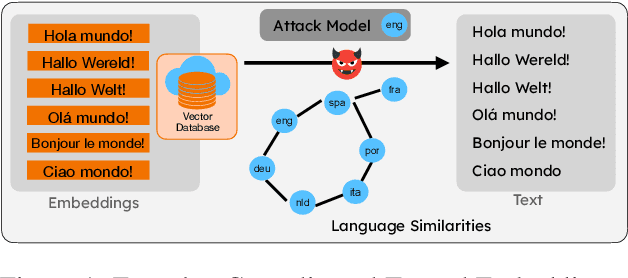

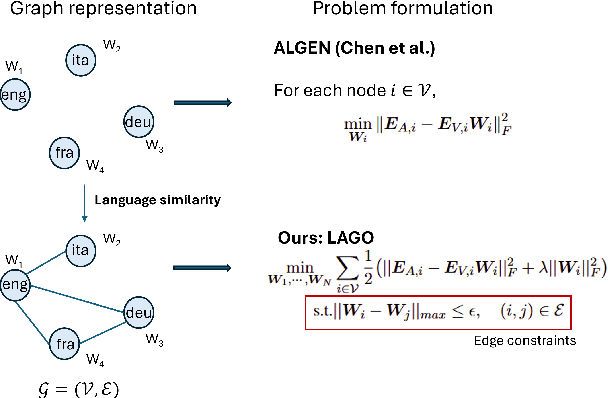
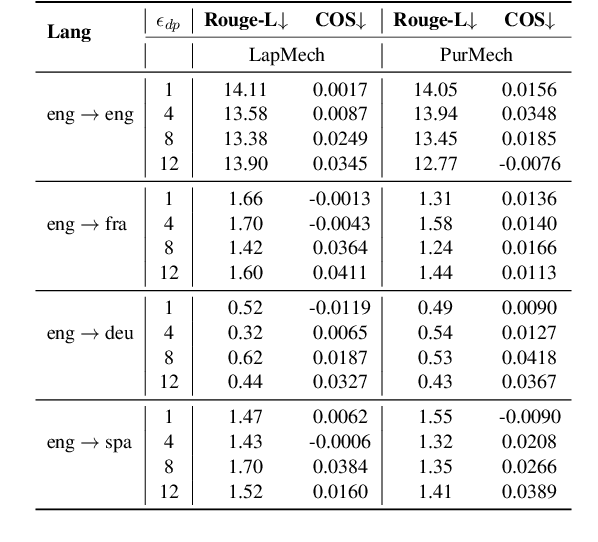
Abstract:We propose LAGO - Language Similarity-Aware Graph Optimization - a novel approach for few-shot cross-lingual embedding inversion attacks, addressing critical privacy vulnerabilities in multilingual NLP systems. Unlike prior work in embedding inversion attacks that treat languages independently, LAGO explicitly models linguistic relationships through a graph-based constrained distributed optimization framework. By integrating syntactic and lexical similarity as edge constraints, our method enables collaborative parameter learning across related languages. Theoretically, we show this formulation generalizes prior approaches, such as ALGEN, which emerges as a special case when similarity constraints are relaxed. Our framework uniquely combines Frobenius-norm regularization with linear inequality or total variation constraints, ensuring robust alignment of cross-lingual embedding spaces even with extremely limited data (as few as 10 samples per language). Extensive experiments across multiple languages and embedding models demonstrate that LAGO substantially improves the transferability of attacks with 10-20% increase in Rouge-L score over baselines. This work establishes language similarity as a critical factor in inversion attack transferability, urging renewed focus on language-aware privacy-preserving multilingual embeddings.
Shared Path: Unraveling Memorization in Multilingual LLMs through Language Similarities
May 21, 2025Abstract:We present the first comprehensive study of Memorization in Multilingual Large Language Models (MLLMs), analyzing 95 languages using models across diverse model scales, architectures, and memorization definitions. As MLLMs are increasingly deployed, understanding their memorization behavior has become critical. Yet prior work has focused primarily on monolingual models, leaving multilingual memorization underexplored, despite the inherently long-tailed nature of training corpora. We find that the prevailing assumption, that memorization is highly correlated with training data availability, fails to fully explain memorization patterns in MLLMs. We hypothesize that treating languages in isolation - ignoring their similarities - obscures the true patterns of memorization. To address this, we propose a novel graph-based correlation metric that incorporates language similarity to analyze cross-lingual memorization. Our analysis reveals that among similar languages, those with fewer training tokens tend to exhibit higher memorization, a trend that only emerges when cross-lingual relationships are explicitly modeled. These findings underscore the importance of a language-aware perspective in evaluating and mitigating memorization vulnerabilities in MLLMs. This also constitutes empirical evidence that language similarity both explains Memorization in MLLMs and underpins Cross-lingual Transferability, with broad implications for multilingual NLP.
MultiHal: Multilingual Dataset for Knowledge-Graph Grounded Evaluation of LLM Hallucinations
May 20, 2025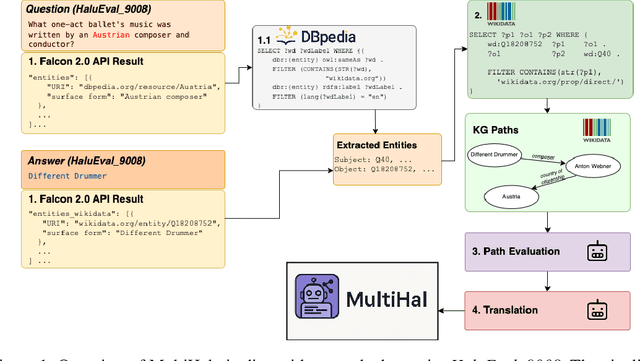

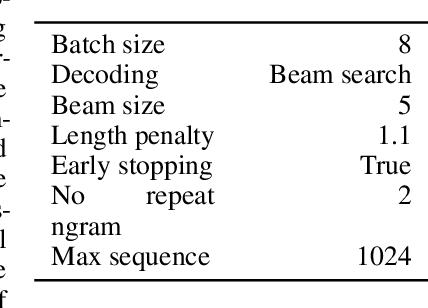
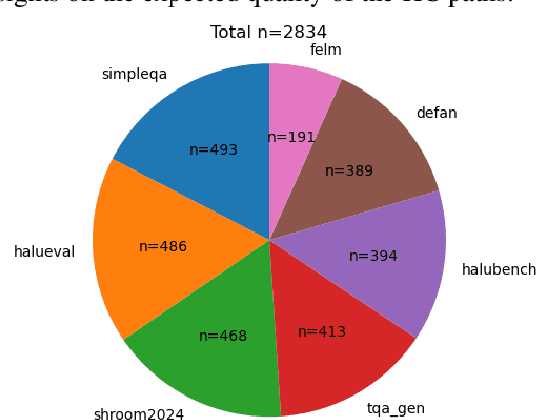
Abstract:Large Language Models (LLMs) have inherent limitations of faithfulness and factuality, commonly referred to as hallucinations. Several benchmarks have been developed that provide a test bed for factuality evaluation within the context of English-centric datasets, while relying on supplementary informative context like web links or text passages but ignoring the available structured factual resources. To this end, Knowledge Graphs (KGs) have been identified as a useful aid for hallucination mitigation, as they provide a structured way to represent the facts about entities and their relations with minimal linguistic overhead. We bridge the lack of KG paths and multilinguality for factual language modeling within the existing hallucination evaluation benchmarks and propose a KG-based multilingual, multihop benchmark called \textbf{MultiHal} framed for generative text evaluation. As part of our data collection pipeline, we mined 140k KG-paths from open-domain KGs, from which we pruned noisy KG-paths, curating a high-quality subset of 25.9k. Our baseline evaluation shows an absolute scale increase by approximately 0.12 to 0.36 points for the semantic similarity score in KG-RAG over vanilla QA across multiple languages and multiple models, demonstrating the potential of KG integration. We anticipate MultiHal will foster future research towards several graph-based hallucination mitigation and fact-checking tasks.
Scaling Reasoning can Improve Factuality in Large Language Models
May 16, 2025Abstract:Recent studies on large language model (LLM) reasoning capabilities have demonstrated promising improvements in model performance by leveraging a lengthy thinking process and additional computational resources during inference, primarily in tasks involving mathematical reasoning (Muennighoff et al., 2025). However, it remains uncertain if longer reasoning chains inherently enhance factual accuracy, particularly beyond mathematical contexts. In this work, we thoroughly examine LLM reasoning within complex open-domain question-answering (QA) scenarios. We initially distill reasoning traces from advanced, large-scale reasoning models (QwQ-32B and DeepSeek-R1-671B), then fine-tune a variety of models ranging from smaller, instruction-tuned variants to larger architectures based on Qwen2.5. To enrich reasoning traces, we introduce factual information from knowledge graphs in the form of paths into our reasoning traces. Our experimental setup includes four baseline approaches and six different instruction-tuned models evaluated across a benchmark of six datasets, encompassing over 22.6K questions. Overall, we carry out 168 experimental runs and analyze approximately 1.7 million reasoning traces. Our findings indicate that, within a single run, smaller reasoning models achieve noticeable improvements in factual accuracy compared to their original instruction-tuned counterparts. Moreover, our analysis demonstrates that adding test-time compute and token budgets factual accuracy consistently improves by 2-8%, further confirming the effectiveness of test-time scaling for enhancing performance and consequently improving reasoning accuracy in open-domain QA tasks. We release all the experimental artifacts for further research.
NLP Security and Ethics, in the Wild
Apr 09, 2025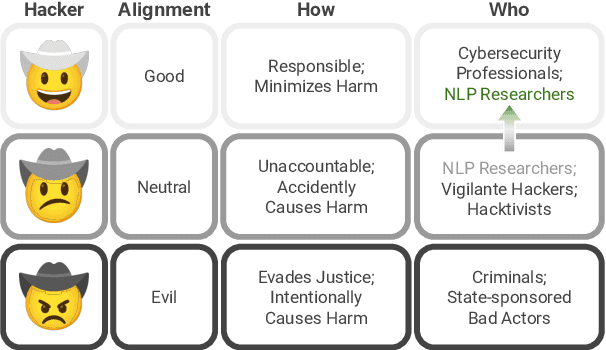
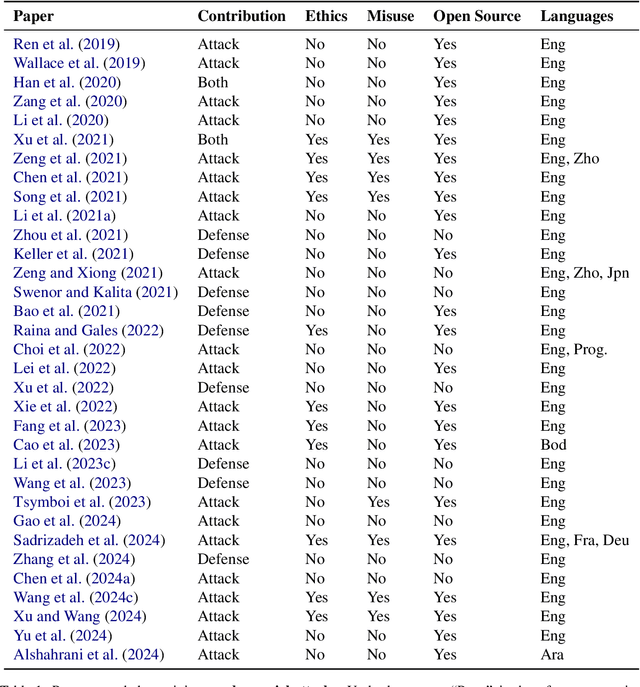

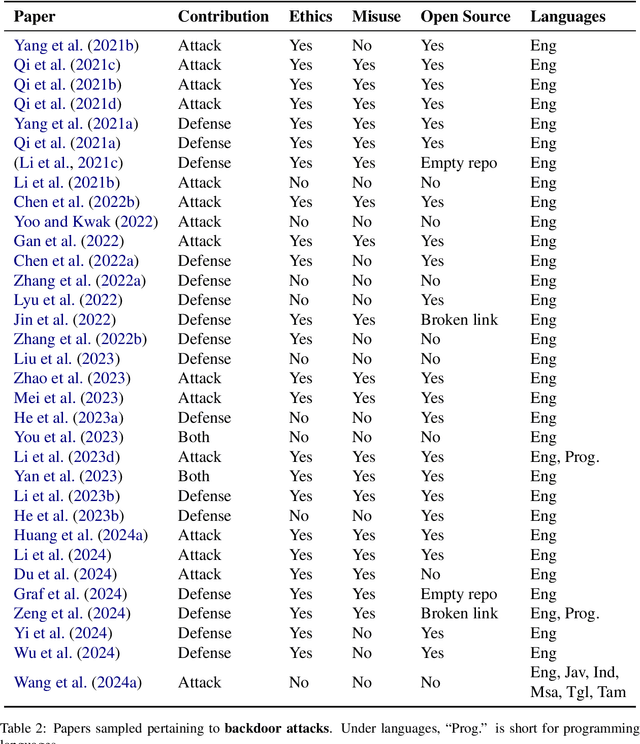
Abstract:As NLP models are used by a growing number of end-users, an area of increasing importance is NLP Security (NLPSec): assessing the vulnerability of models to malicious attacks and developing comprehensive countermeasures against them. While work at the intersection of NLP and cybersecurity has the potential to create safer NLP for all, accidental oversights can result in tangible harm (e.g., breaches of privacy or proliferation of malicious models). In this emerging field, however, the research ethics of NLP have not yet faced many of the long-standing conundrums pertinent to cybersecurity, until now. We thus examine contemporary works across NLPSec, and explore their engagement with cybersecurity's ethical norms. We identify trends across the literature, ultimately finding alarming gaps on topics like harm minimization and responsible disclosure. To alleviate these concerns, we provide concrete recommendations to help NLP researchers navigate this space more ethically, bridging the gap between traditional cybersecurity and NLP ethics, which we frame as ``white hat NLP''. The goal of this work is to help cultivate an intentional culture of ethical research for those working in NLP Security.
Trustworthy Machine Learning via Memorization and the Granular Long-Tail: A Survey on Interactions, Tradeoffs, and Beyond
Mar 10, 2025
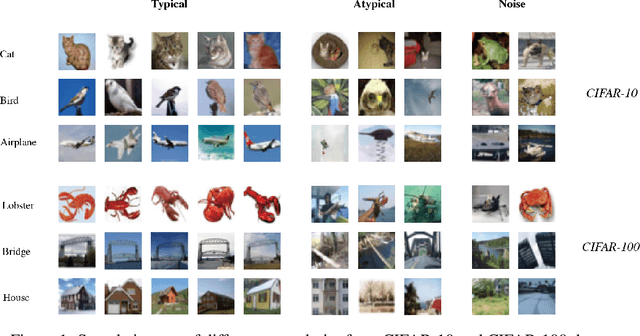
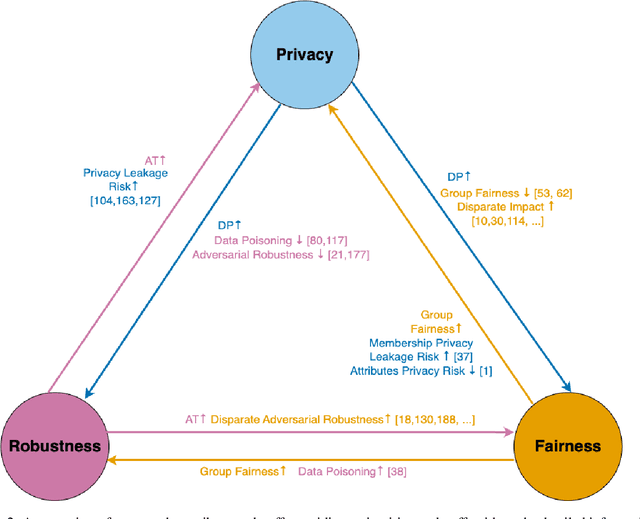
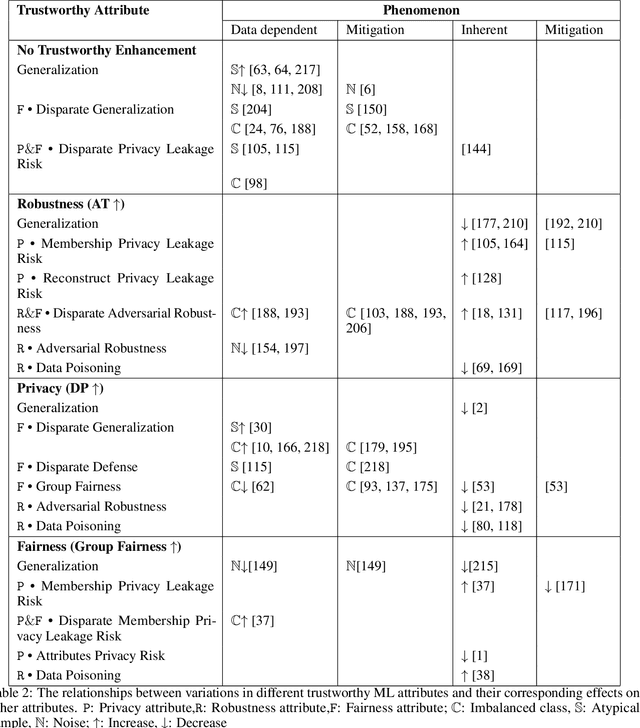
Abstract:The role of memorization in machine learning (ML) has garnered significant attention, particularly as modern models are empirically observed to memorize fragments of training data. Previous theoretical analyses, such as Feldman's seminal work, attribute memorization to the prevalence of long-tail distributions in training data, proving it unavoidable for samples that lie in the tail of the distribution. However, the intersection of memorization and trustworthy ML research reveals critical gaps. While prior research in memorization in trustworthy ML has solely focused on class imbalance, recent work starts to differentiate class-level rarity from atypical samples, which are valid and rare intra-class instances. However, a critical research gap remains: current frameworks conflate atypical samples with noisy and erroneous data, neglecting their divergent impacts on fairness, robustness, and privacy. In this work, we conduct a thorough survey of existing research and their findings on trustworthy ML and the role of memorization. More and beyond, we identify and highlight uncharted gaps and propose new revenues in this research direction. Since existing theoretical and empirical analyses lack the nuances to disentangle memorization's duality as both a necessity and a liability, we formalize three-level long-tail granularity - class imbalance, atypicality, and noise - to reveal how current frameworks misapply these levels, perpetuating flawed solutions. By systematizing this granularity, we draw a roadmap for future research. Trustworthy ML must reconcile the nuanced trade-offs between memorizing atypicality for fairness assurance and suppressing noise for robustness and privacy guarantee. Redefining memorization via this granularity reshapes the theoretical foundation for trustworthy ML, and further affords an empirical prerequisite for models that align performance with societal trust.
How Do Hackathons Foster Creativity? Towards AI Collaborative Evaluation of Creativity at Scale
Mar 06, 2025Abstract:Hackathons have become popular collaborative events for accelerating the development of creative ideas and prototypes. There are several case studies showcasing creative outcomes across domains such as industry, education, and research. However, there are no large-scale studies on creativity in hackathons which can advance theory on how hackathon formats lead to creative outcomes. We conducted a computational analysis of 193,353 hackathon projects. By operationalizing creativity through usefulness and novelty, we refined our dataset to 10,363 projects, allowing us to analyze how participant characteristics, collaboration patterns, and hackathon setups influence the development of creative projects. The contribution of our paper is twofold: We identified means for organizers to foster creativity in hackathons. We also explore the use of large language models (LLMs) to augment the evaluation of creative outcomes and discuss challenges and opportunities of doing this, which has implications for creativity research at large.
HiFi-KPI: A Dataset for Hierarchical KPI Extraction from Earnings Filings
Feb 21, 2025Abstract:The U.S. Securities and Exchange Commission (SEC) requires that public companies file financial reports tagging numbers with the machine readable inline eXtensible Business Reporting Language (iXBRL) standard. However, the highly complex and highly granular taxonomy defined by iXBRL limits label transferability across domains. In this paper, we introduce the Hierarchical Financial Key Performance Indicator (HiFi-KPI) dataset, designed to facilitate numerical KPI extraction at specified levels of granularity from unstructured financial text. Our approach organizes a 218,126-label hierarchy using a taxonomy based grouping method, investigating which taxonomy layer provides the most meaningful structure. HiFi-KPI comprises ~1.8M paragraphs and ~5M entities, each linked to a label in the iXBRL-specific calculation and presentation taxonomies. We provide baselines using encoder-based approaches and structured extraction using Large Language Models (LLMs). To simplify LLM inference and evaluation, we additionally release HiFi-KPI Lite, a manually curated subset with four expert-mapped labels. We publicly release all artifacts
SEFL: Harnessing Large Language Model Agents to Improve Educational Feedback Systems
Feb 18, 2025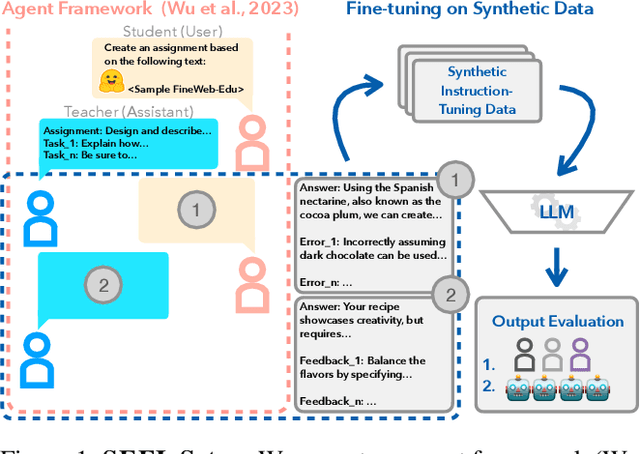

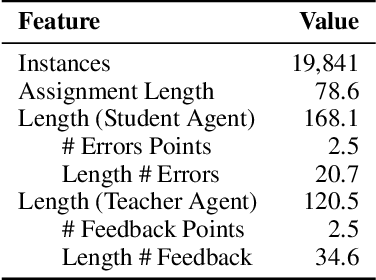
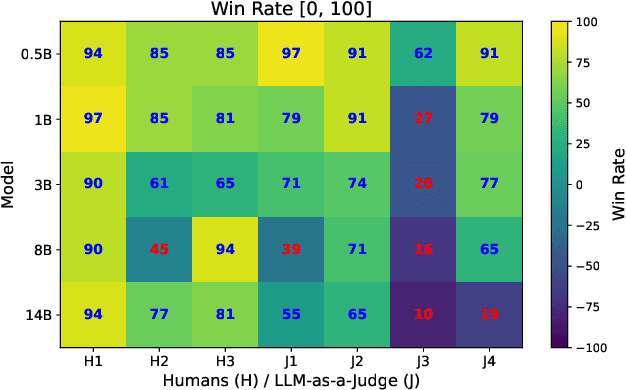
Abstract:Providing high-quality feedback is crucial for student success but is constrained by time, cost, and limited data availability. We introduce Synthetic Educational Feedback Loops (SEFL), a novel framework designed to deliver immediate, on-demand feedback at scale without relying on extensive, real-world student data. In SEFL, two large language models (LLMs) operate in teacher--student roles to simulate assignment completion and formative feedback, generating abundant synthetic pairs of student work and corresponding critiques. We then fine-tune smaller, more computationally efficient LLMs on these synthetic pairs, enabling them to replicate key features of high-quality, goal-oriented feedback. Unlike personalized tutoring approaches that offer multi-turn, individualized instruction, SEFL specifically focuses on replicating the teacher-->student feedback loop for diverse assignments. Through both LLM-as-a-judge and human evaluations, we demonstrate that SEFL-tuned models outperform their non-tuned counterparts in feedback quality, clarity, and timeliness. These findings reveal SEFL's potential to transform feedback processes for higher education and beyond, offering an ethical and scalable alternative to conventional manual feedback cycles.
 Add to Chrome
Add to Chrome Add to Firefox
Add to Firefox Add to Edge
Add to Edge